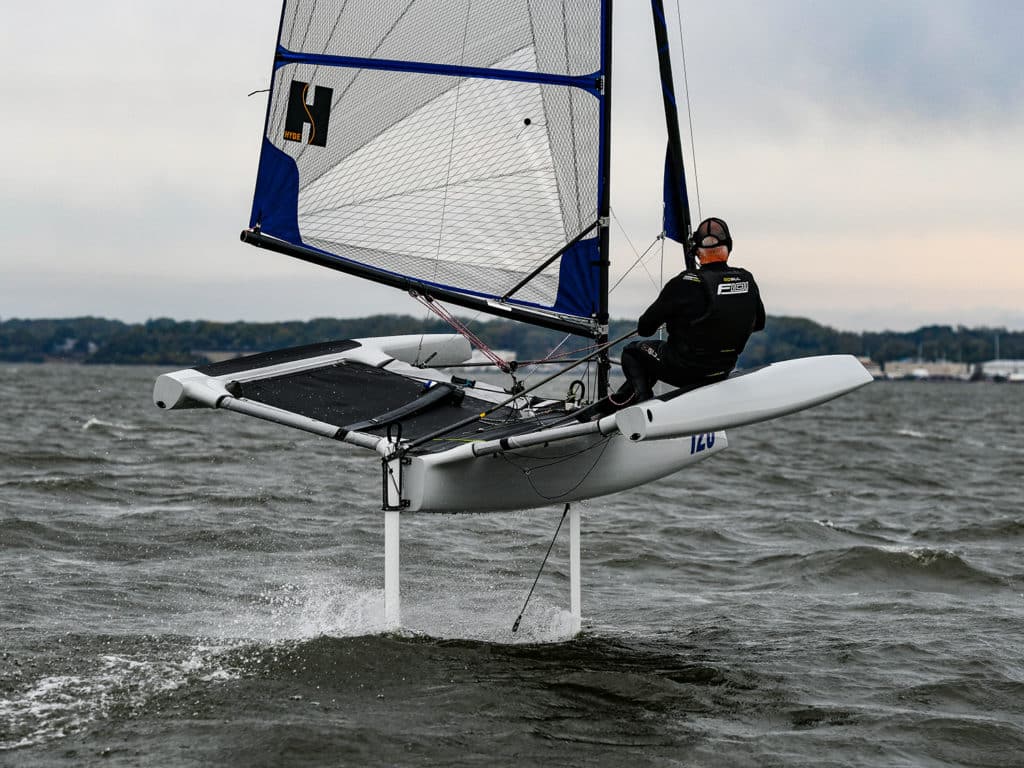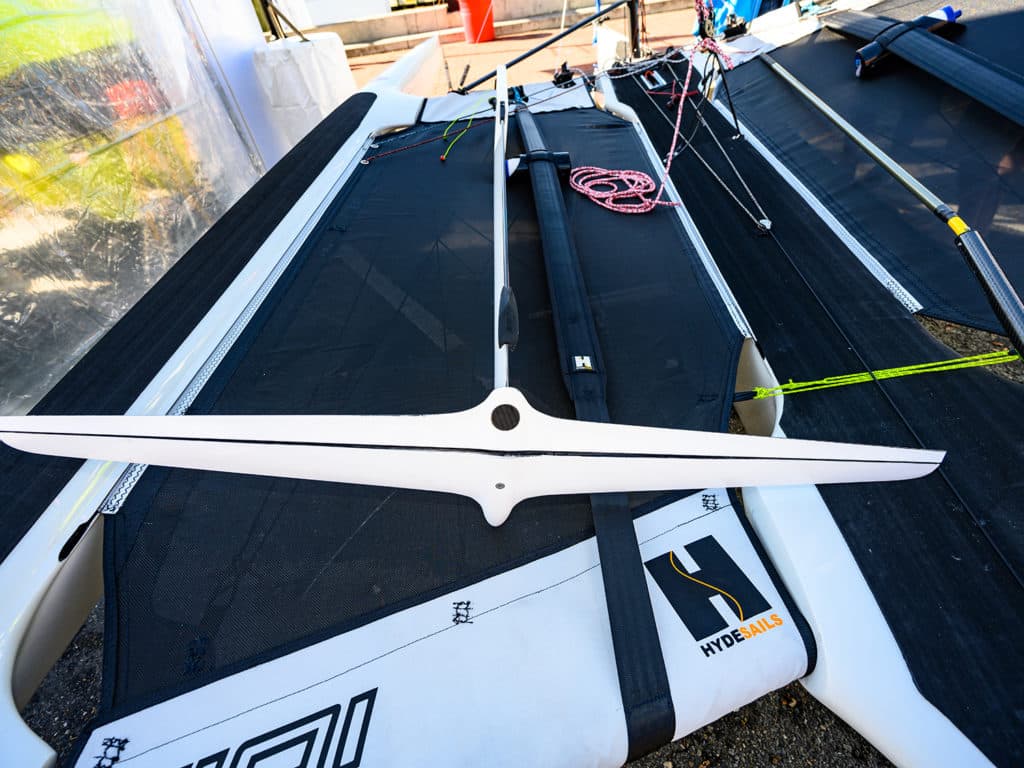
At A Glance
Price As Sailed: $24,750
Design Purpose: Learn to foil, advance skills
Crew List: One or two
Rob Andrews and his business partner Alan Hillman have been teaching foiling for a few years now, and one thing they’ve learned is we get better by sailing, not by swimming. Thus was the genesis of the F101, a craft with which they could teach the fundamentals of foiling—without the crash and burn. But it’s not just a learn-to-foil boat, either. It’s a platform with which new and experienced converts alike can take their foiling skill set to a higher level.
The key to mastering the F101, Andrews explains, is grasping righting moment. With the trimaran platform, you get plenty of it, as well as a stable boat that’s more forgiving than any other small foiler. “The trimaran configuration gives you righting moment direct from the foil in the middle hull,” he says, “and gives a measure of safety. It’s hard to capsize the boat.”
The judges learn as much when it comes time to sail the F101. In 15 knots and more, and a steep Chesapeake chop, Powlison is first to give it a go. He settles into the boat, gets his bearings, perches skittishly on the weather hull, sheets on the mainsail (no need to use the boat’s gennaker above 12 knots) and off he goes like a bat out of hell, popping up on the foils without even trying.
“The trick is getting used to the sensation of heeling to windward,” he says. “It takes a bit of trust. Once foiling, it’s quiet and fast, and I felt like I had to be really active on the mainsheet to keep it on the foils.”
That’s true of any foiler, but the beauty of the F101, the judges agree, is when you do lose it, it’s no big deal. The boat drops off its foils, the bows auger in and you get a face full of water; but just reset, bear away and try again.

“The hull shape picks up the buoyancy gently,” Stewart says, “which makes it depress smoothly and prevents it from pitchpoling. When I dumped it a few times I thought I was going in, but not a chance. You quickly realize there’s plenty of floatation there to save you. In flat water, with one day of training you’d get up to speed quickly.”
When teaching people to foil, Hillman starts with “skimming,” a ride height barely above the surface. As the sailor becomes more accustomed to how the boat behaves, there’s a simple line adjustment at the foil head: Dial it up one setting and increase your ride height.
As you’re sailing, the foil wand hanging behind the trailing edge effectively feels where the boat is riding relative to the water and actuates the main flap. In light winds, it gives you more lift, and the boat pops up on the foil. Get too high, and the wand drops down even further, forcing negative lift on the flap, which brings you back down to your desired height and prevents the foils from breaking the surface.
In terms of construction, the judges praise its carbon-and-epoxy build quality and the all-up weight of 180 pounds, which makes it easy to get to and from the water. With the F101 sitting on its dolly in the boat park, going sailing is as simple as pulling back the covers, hoisting the main and launching from a dock, beach or boat ramp with minimal fuss.
“What I like about it is that it’s one of those boats that you buy and don’t need to add anything to it,” Allen says. “There’s nothing to change out or upgrade.”
For simplicity, the boat is set up with adjustments that let you ratchet up the experience as you climb the learning curve. On the rudder foil, for example, there is a clear numbering system so that as you twist the tiller extension, you change the rudder rake. The baseline setting is zero, and it’s the same for the main foil. The only thing left is to balance the forces with the mainsheet.
“When I first got up on the foils, I was thinking to myself, ‘This is too easy; I should be working harder,’” Powlison says. “As they said, this boat solves a lot of the problems associated with other foiling dinghies. It’s a great high-performance boat that represents the next step in making foiling accessible to the public.”
See All Winners
Other Winners:









